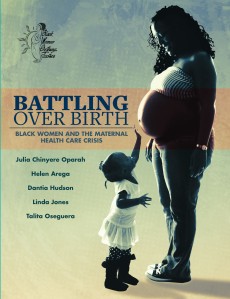Some of the factors influencing how much milk a mother may make when she does not give birth to the baby she wants to breastfeed.
Alyssa Schnell, MS, IBCLC
The first in a mini series of posts about what to expect when breastfeeding a baby you did not give birth to, adapted from Breastfeeding Without Birthing, an essential guide to breastfeeding for mothers through adoption, surrogacy, and other special circumstances.
Mothering success is not measured in ounces—or drops—of milk that flow from breast to mouth. It’s measured in the love that flows between mother and baby (Cassar-Uhl, 2012).
Inducing lactation

This post answers some of the questions you may have about what to expect from inducing lactation—with two more posts yet to come.
Making milk
Be forewarned: mothers have experienced such a wide range of outcomes when inducing lactation that it is very difficult to predict what any one mother’s outcome will be. The one answer I can provide is that a mother who has very specific expectations with regard to milk production when inducing lactation is likely to be disappointed. I encourage you to go into this endeavor with an open mind, believing that any amount of milk you produce will be supremely beneficial to your baby.
How much milk will I produce?
Usually this is the first question expectant mothers ask me about inducing lactation. I would love to tell them a certain number of ounces per day, or a percentage of their baby’s intake. I can only provide a broad range: most mothers from Western countries who induce lactation produce 25% to 75% of their baby’s nutritional needs (Avery, 2012; Hormann, 1977). Some mothers—and I know of a few, me included—have been able to provide 100% of their baby’s nutritional needs. Some mothers are not able to produce any milk.
Why such a broad range of outcomes for mothers inducing lactation?
Milk production is influenced by many factors, some over which you may have control and some that you do not, including:
- Motivation
- Previous breastfeeding experience
- Breastfeeding support
- Health
- Condition of breasts
- Parenting practices
- Frequency and effectiveness of nipple stimulation and milk
removal - Use of galactogogues (herbs or medications that may enhance
milk production)
Motivation is perhaps the most important determinant of the amount of milk a mother will produce by inducing lactation. When breastfeeding is really important to a mother, her body is much more likely to respond to her efforts, even when other important factors for milk production are lacking (Abul-Fadl, Shawky, El–Taweel, Cadwell, & Turner–Maffei, 2012; WHO, 1998).
Anat’s story. This mother was highly motivated to breastfeed an ill baby.
Anat, a mother by birth to several older children, became a foster mother to baby Kamila when Kamila’s birthmother died in childbirth. Kamila was very ill, suffering from hydrocephalus (water on the brain) and experiencing frequent, severe convulsions as a result. Anat was very nurturing, sensitive, and responsive to Kamila’s special needs. Despite her desires, Anat’s husband was opposed to Anat breastfeeding Kamila. However, Anat had a secret. During the middle of the night, while preparing Kamila’s bottle of formula, Anat would latch Kamila at the breast to soothe her, while she waited for her bottle. After just a few weeks of putting Kamila to the breast just once per day, Anat began producing milk. With just one nursing session a day, Kamila’s convulsions became much less frequent and less severe.
Prior breastfeeding experience. Mothers who have breastfed prior babies tend to produce more milk (Auerbach, 1981). This statement is true even for mothers who have given birth to their nursling because each time a mother is pregnant and/or breastfeeds, she builds glandular breast tissue. The shorter the amount of time since a mother last breastfed, the more milk she is likely to produce (WHO, 1998). In addition to the physiological advantage, a mother with previous breastfeeding experience has confidence in her ability to breastfeed. She has knowledge and resources accrued from her previous breastfeeding experiences that provide a foundation for breastfeeding success.
Breastfeeding culture. Research has shown that mothers from developing countries, where breastfeeding is often the cultural norm, produce more milk. These mothers have the support of their community. They are confident in their ability to breastfeed, because they grew up in an environment where breastfeeding was just a normal part of life. They saw their mothers, sisters, aunts, cousins, and friends all publicly breastfeeding as part of the daily routine of caring for a baby. Mothers from these countries are more likely to parent in ways that support breastfeeding. They are also less likely to have alternatives, such as bottles and infant formula, readily available. Despite the lack of availability of breast pumps and medications to enhance milk production, these mothers still tend to make more milk than mothers in developed countries (Gribble, 2004).

If you don’t live in a breastfeeding culture—and many of you reading this don’t—you can still achieve the degree of milk production that the mothers in developing countries do by participating within a breastfeeding culture-within-a-culture. This usually happens within the context of a close extended family of breastfeeding mothers, or a breastfeeding mothers’ group (Thorley, 2004). See Chapter 2, A Community of Support, for more information.
Mother’s health. In general, a mother who is healthy will produce more milk. Some key ingredients for generous milk production are:
- Rest. If your baby hasn’t arrived yet, bank as many hours of sleep as you can. These will become precious later. If your baby has arrived, sleep when your baby sleeps. Get help around the house, if possible, to free up your time to rest when your baby doesn’t need you.
- Relaxation. More easily said than done, as you are expecting your baby’s arrival, or if you have a new baby! If you are feeling stressed, breathe deeply for several minutes and imagine yourself in a calm place such as the beach, your favorite cozy chair, or wherever you feel most relaxed.
- Exercise. Spend time with friends. Although you won’t have as much time as before baby, don’t give up your hobbies and interests.
- Diet. Good nutrition means eating a varied, well-balanced diet of foods in as close to their natural state as possible. Foods with a particular reputation for increasing milk production are described in Chapter 12, Medications for Inducing Lactation.
- Thirst. Drink healthy beverages, such as water, herbal teas and fresh juices. Drink to thirst, but not past it. It is a common misconception that the more a mother drinks, the more milk she will make.
- Your health history. This can provide clues about your ability to produce milk. If you are a woman who is infertile due to hormonal issues, these same issues can affect your ability to make milk. Some common causes of infertility that can affect milk production are polycystic ovarian syndrome (PCOS), luteal phase defect (LPD), pituitary issues, thyroid dysfunction, diabetes, and age. If you have any of these health issues, seek the support of your healthcare practitioner. Make sure your medications are doing their jobs. Alternative healthcare practitioners may also support you. For more information regarding hormonal issues and milk production, see The Breastfeeding Mother’s Guide to Making More Milk (West & Marasco, 2008) and the next post in our series on breastfeeding without birthing, to follow shortly.
Breasts. Certain conditions can limit the ability of your breasts to make milk.
- A history of breast surgery. Breast surgery can sever or damage milk ducts and the nerves in and around the breasts. It may also result in a decreased amount of glandular breast tissue.
- A history of breast injury. Breast injury may result in damage to the milk ducts or nerves in the breasts.
- Hypoplasia/insufficient glandular tissue (IGT). This is a condition in which the glandular breast tissue has not fully developed. It is characterized by breasts having an unusual shape or large spacing between them. Your lactation consultant may be able to spot signs and help with strategies.
None of these conditions necessarily rules out breastfeeding.

Parenting practices. How you parent can influence the physiological process of lactation. Using any of the parenting tools for latching and attaching introduced in Chapter 6, such as babywearing, co-sleeping, or co-bathing, boosts levels of oxytocin, an essential hormone for lactation, since oxytocin increases whenever mother and baby are in close bodily contact. Furthermore, using any of these approaches often leads to more frequent breastfeeding, a key to good milk production.
Frequency and effectiveness of breast stimulation and milk removal. The primary and most effective type of breast stimulation and milk removal is a baby who is breastfeeding often and breastfeeding well. For mothers who are supplementing breastfeeding with expressed milk or formula, the use of an at-breast supplementer (versus a bottle or other supplemental feeding method) can increase both the quality and quantity of suckling from the breast (Genna, 2016). More information regarding at-breast supplementers is provided in Chapter 13.

Supplementation. Breast stimulation and milk removal can also happen using a breast pump, with hand expression, or by a partner suckling. Often, mothers will use these techniques prior to the baby’s arrival to initiate lactation, as well as after the baby arrives to further increase milk production. For mothers inducing lactation prior to the baby’s arrival, the amount of milk produced by pumping or hand expressing does not necessarily indicate the amount of milk a mother will be able to produce once she is breastfeeding (Starr, 2008). Chapter 11, Physical Techniques for Inducing Lactation, describes each of these milk-making techniques in detail.
Use of galactogogues. Galactogogues can be herbal or pharmaceutical medications, or foods reputed to increase milk production. Taking galactogogues may increase your milk production, and the pharmaceutical medication domperidone has been shown to be the most effective of the galactogogues. If you have run the gamut of fertility treatments, you may find the idea of using medications to induce lactation is nothing compared to the heavy-duty hormones that you took during fertility treatments, or you may feel that you are through with taking medications. See Chapter 12, Medications for Inducing Lactation, for more information on using galactogogues.
How long will it take?
In most cases, it takes at least a month to prepare the breasts before they can make milk. With continued breast stimulation and milk removal, the amount of milk produced will increase from droplets to sprays. How long it takes is not an indication of how well it will work eventually (Starr, 2008). In one case report, an adoptive mother began inducing lactation when her baby was 10 days old. No noticeable milk was produced until the baby was four months old. Within a week, the mother was making enough milk to exclusively breastfeed her baby (Cheales-Siebenaler, 1999).
Composition of the milk
Human milk contains over 200 components especially designed to meet the needs of infants. In a study of two mothers who induced lactation, both produced milk similar in composition to that of mothers who had birthed their babies (Kulski, Hartmann, Saint, Giles, & Gutteridge, 1981). Whether or not you reach full milk production, your milk contains the same number of antibodies and other immune factors as that of mothers who birth and exclusively breastfeed their babies (Wiessinger, West & Pitman, 2010).

Read part 2: Breastfeeding Without Birthing: Hormones
Part 3: Breastfeeding Without Birthing: Tips for Pumping Success
References
Abul-Fadl, A. M. A., Shawky, M., El–Taweel, A., Cadwell, K., Turner–Maffei, C. (2012). Evaluation of mothers’ knowledge, attitudes, and practice towards the ten steps to successful breastfeeding in Egypt. Breastfeeding Medicine, 7(3), 173–178.
Auerbach, K. G. (1981). Induced Lactation. American Journal of Diseases of Children, 135(4), 340. doi:10.1001/archpedi.1981.02130280030011
Avery, J. L. (2012). Frequently asked questions about nursing adopted babies. Retrieved from: http://www.lact-aid.com/faq-about-nursing-adoptive-babies/
Cassar-Uhl, D. (2012). “Yes, you can breastfeed!” Supporting mothers with mammary hypoplasia/insufficient glandular tissue as a lactation consultant in private practice. Lactation Consultant in Private Practice Workshop. Philadelphia.
Cheales-Siebenaler, N. J. (1999). Induced lactation in an adoptive mother. Journal of Human Lactation, 15(1), 41–43. doi:10.1177/089033449901500111

Genna, C. W. (2016). Selecting and using breastfeeding tools: Improving care and outcomes. Amarillo, TX: Praeclarus Press.
Gribble, K. (2004). The influence of context on the success of adoptive breastfeeding: Developing countries and the west. Breastfeeding Review, 12(1), 5–13.
Hormann, E. (1977). Breast Feeding the Adopted Baby. Birth, 4(4), 165–173. doi:10.1111/j.1523–536x.1977.tb01235.x
Kulski, J. K., Hartmann, P. E., Saint, W. J., Giles, P. F., & Gutteridge, D. H. (1981). Changes in the milk composition of nonpuerperal women. American Journal of Obstetrics and Gynecology, 139(5), 597–604. doi:10.1016/0002-9378(81)90523-8
Starr, D. (2008). Preparation for adoptive nursing. Retrieved from http://www.fourfriends.com/abrw/Darillyn%27s/preparation.htm

Thorley, V. (2004). Breastfeeding culture is important to the success of inducing lactation in the absence of pregnancy or after a gap. Breastfeeding Review, 12(3), 27.
West, D., & Marasco, L. (2008). The breastfeeding mother’s guide to making more milk: Foreword by Martha Sears, RN (family & relationships). New York: McGraw Hill.
Wiessinger, D., West, D., & Pitman, T. (2010). The womanly art of breastfeeding, 8th edition. New York: Ballantine Books.
World Health Organization. (1998). Relactation: A review of experience and recommendations for practice. Geneva: The World Health Organization.






















2 Pingback